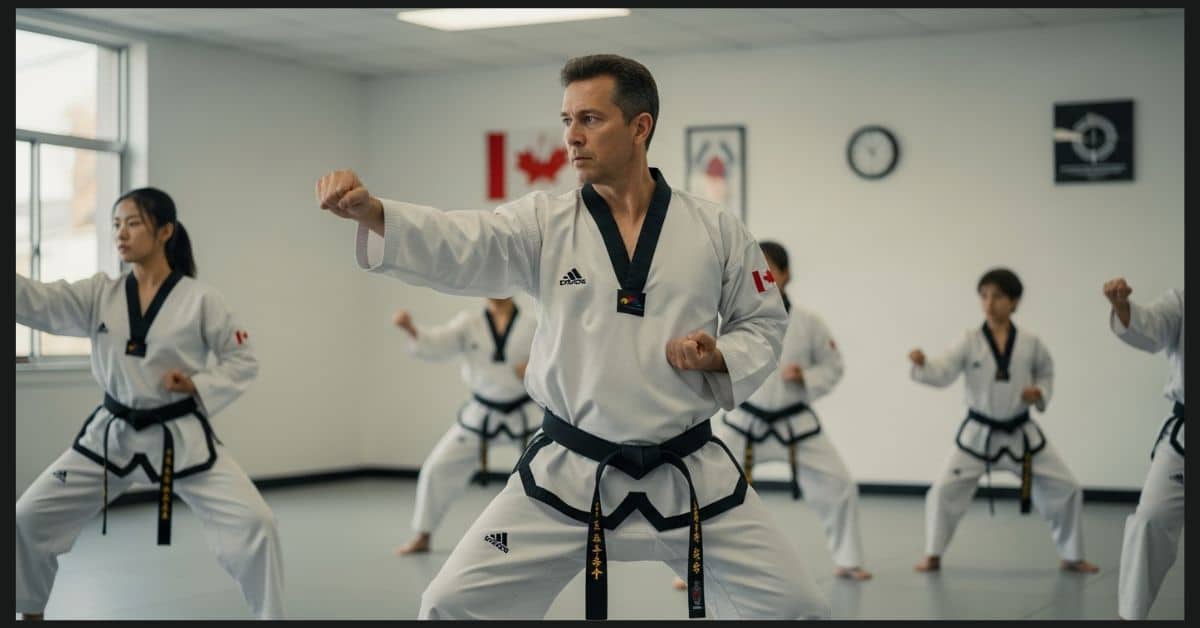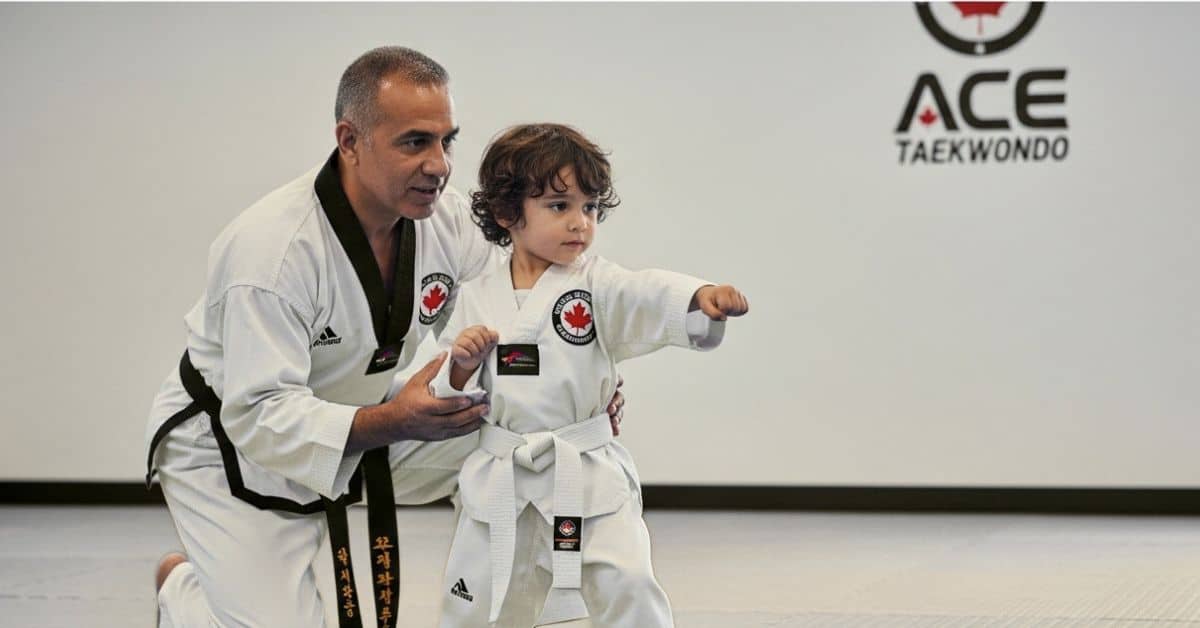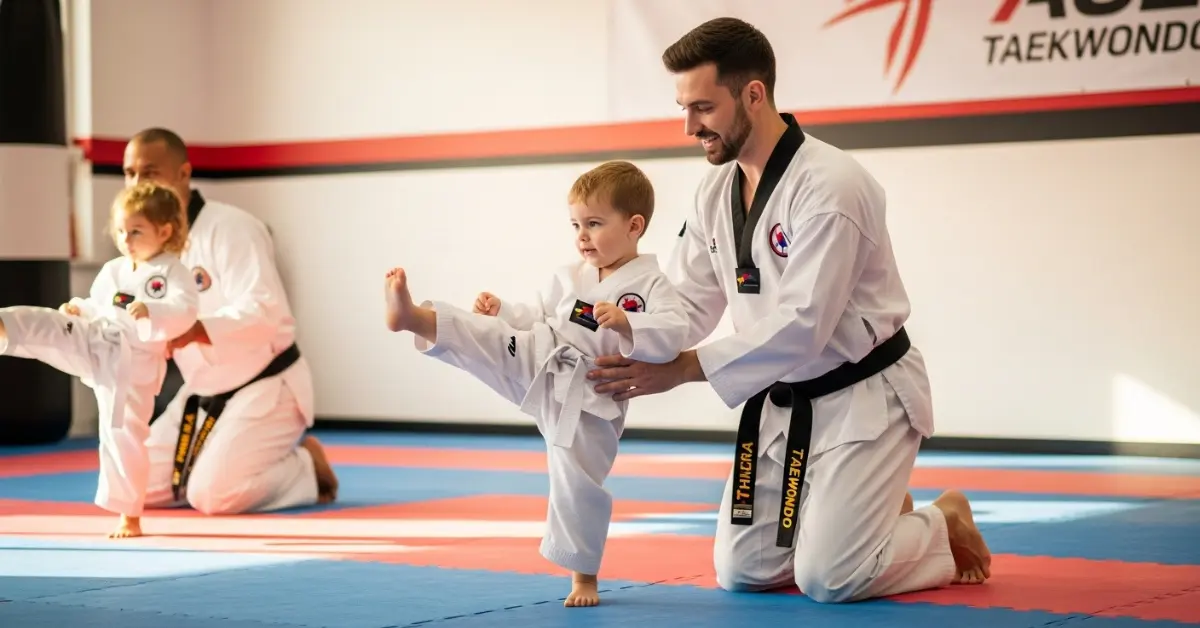Understanding Poomsae in Taekwondo
In Taekwondo, Poomsae (often called forms) is the foundation of discipline and movement. Each Poomsae is a sequence of Taekwondo techniques performed in a set order to develop focus, strength, and precision. When students practise Poomsae, they are not simply memorizing moves – they are learning how to control their body and mind.
At Ace Taekwondo, I remind every student that Taekwondo Poomsae is more than physical motion. It is a way to connect technique with purpose, balance, and mental calm.
The Meaning Behind Taekwondo Forms
The word Poomsae translates roughly to form or pattern. Each form represents a theme drawn from Korean culture, philosophy, or nature. For example, one form may symbolise harmony, while another reflects strength or patience.
Through these Taekwondo forms, students learn how each punch, block, and stance fits within a wider story of martial arts development. It is like reading a book through movement – each chapter builds skill and confidence.
Why Poomsae Matters in Martial Arts Training
Many beginners think of martial arts only as sparring or self-defence. Yet, Poomsae training routines teach the structure behind every action. Practising forms helps to:
- Build muscle memory through repetition
- Improve balance, coordination, and timing
- Strengthen focus and breathing control
- Prepare for advanced sparring and techniques
These routines help students progress from basic Poomsae steps to more complex patterns as they grow in skill.
The History of Poomsae
The history of Poomsae dates back hundreds of years in Korean martial arts. Traditional masters developed these movements to pass on skills when combat training was restricted. Each generation refined the patterns, shaping them into what we know today as Taekwondo Poomsae.
Modern Taekwondo has recognised forms across different federations, such as Kukkiwon (WT) and ITF. Though variations exist, the purpose remains constant – to preserve tradition and improve a student’s physical and mental strength.
Basic Poomsae Steps for Beginners
Every beginner starts with simple Taekwondo stances and blocks.
The first forms introduce forward stance, low block, middle punch, and basic kicks. Students learn how to breathe properly, pivot with control, and maintain eye focus.
As skill grows, they combine these into martial arts sequences that build coordination and rhythm. I always tell new students, “Perfect your basics first – they will guide you in every advanced move.”
From Beginner to Advanced Forms
Taekwondo offers clear progress from beginner to advanced forms. Early Poomsae focus on balance and control, while higher ones add speed, jump kicks, and complex turns.
At Ace Taekwondo, we ensure each student masters one form before moving to the next. This structured path teaches discipline and keeps motivation high.
Common stages include:
- Taegeuk 1 (IL Jang) – Foundation of movement and balance.
- Taegeuk 2–4 – Introduce stronger kicks and blocks.
- Taegeuk 5–8 – Demand power, rhythm, and coordination.
- Black Belt Forms – Symbolise mastery and spirit.
How to Practise Traditional Forms
Practising traditional forms practice requires patience and attention. Here’s what I recommend to every student:
- Visualise each move. Imagine facing an opponent.
- Maintain rhythm. Every strike and block must flow.
- Control breathing. Inhale during preparation, exhale with force.
- Repeat mindfully. Focus on accuracy, not speed.
When you train this way, Poomsae becomes a form of moving meditation – a moment where body and mind act as one.
Memorizing Poomsae Movements
Many learners ask how to remember the order of forms. The answer is practice and observation. Watching a forms demonstration can help. In class, I often pair students so they can guide each other. Teaching someone else reinforces what you know.
Here are some quick tips for memorizing Poomsae movements:
- Divide the form into sections.
- Name each stance or block aloud.
- Practise daily in short sessions.
- Review with your instructor for corrections.
Consistency builds mastery.
The Art of Poomsae Performance
When performing in front of others, your goal is not speed but expression. Poomsae performance reflects your dedication and spirit. Judges in tournaments look for power, balance, accuracy, and confidence.
Before any competition, I remind my students: “Move with purpose. Every motion should tell a story.”
That mindset turns martial arts choreography into art.
Types of Taekwondo Poomsae
There are many recognised types of Taekwondo Poomsae, each linked to belt levels and federations.
- Kukkiwon (Taegeuk) Forms
Used in World Taekwondo (WT), these forms range from Taegeuk 1 to 8, followed by black belt forms like Koryo, Keumgang, and Taebaek.
- ITF Patterns
Known as Tul, these forms are part of the International Taekwon-Do Federation system. Each pattern honours a historical figure or idea from Korean heritage. Though they differ slightly, both systems aim to improve technique, focus, and martial discipline.
How Poomsae Shapes Character
Beyond technique, practising learning Taekwondo forms builds inner strength. Students gain patience, humility, and respect for others. Children learn discipline early, while adults rediscover focus and mindfulness.
Every repetition strengthens not just muscles but values – a key part of Taekwondo philosophy.
Common Mistakes to Avoid in Poomsae
Even experienced students can form bad habits.
Here are some errors I often correct in class:
- Rushing through movements instead of controlling pace
- Forgetting proper stance width or hand height
- Losing eye focus during transitions
- Ignoring breathing rhythm
Paying attention to these details separates average students from true practitioners.
How Poomsae Improves Taekwondo Techniques
Poomsae training supports every aspect of Taekwondo. Each block, strike, or kick in sparring connects to a movement first learned in a form.
By practising forms daily, you improve:
- Reaction timing
- Power generation through hip rotation
- Posture stability
- Breathing control
This constant repetition refines your Taekwondo techniques and prepares you for real-life application.
Bringing Poomsae to Life at Ace Taekwondo
At Ace Taekwondo Canada, we treat Poomsae as a living art. Each student, from beginner to black belt, learns to express their individuality within tradition. During classes, we mix physical drills with mindset training – because martial arts should build character, not just strength. Students perform their forms during grading and community events, showing how practice can turn into pride.
Why You Should Practise Poomsae
If you want to improve your confidence, focus, and control, Poomsae is the perfect path. It combines discipline, creativity, and fitness – all in one. Through regular Taekwondo training routines, your mind grows calmer and your movements sharper. Remember, every black belt once stood where you are now. With consistency, your forms will soon tell your story too.
Final Thoughts from Master Viresh
Poomsae is the heartbeat of Taekwondo. It connects past and present, uniting tradition with modern practice.
Whether you are learning your first form or mastering advanced ones, treat each movement with respect and intent.
At Ace Taekwondo, I see every student’s journey as unique. What matters most is growth, not perfection. Keep training, stay humble, and let your Poomsae reflect your spirit.
Read more: Why Are Taekwondo Great For Beginners
Frequently Asked Questions
What is the main purpose of practising Poomsae in Taekwondo?
The purpose of Poomsae is to build control, focus, and understanding of movement. Each form helps students connect technique with discipline while improving strength, balance, and confidence. It is a mental and physical practice that sharpens skill and character together.
How often should I practise Taekwondo Poomsae?
For steady improvement, students should practise Poomsae at least three to four times a week. Short, consistent sessions are better than long, occasional ones. Focus on accuracy, breathing, and rhythm each time to make real progress.
Can beginners learn Poomsae easily at Ace Taekwondo?
Yes, every beginner can learn Poomsae step by step. At Ace Taekwondo, we start with basic Poomsae steps and build confidence through clear guidance and regular feedback. Our goal is to make each student comfortable and motivated as they move from beginner to advanced forms.








